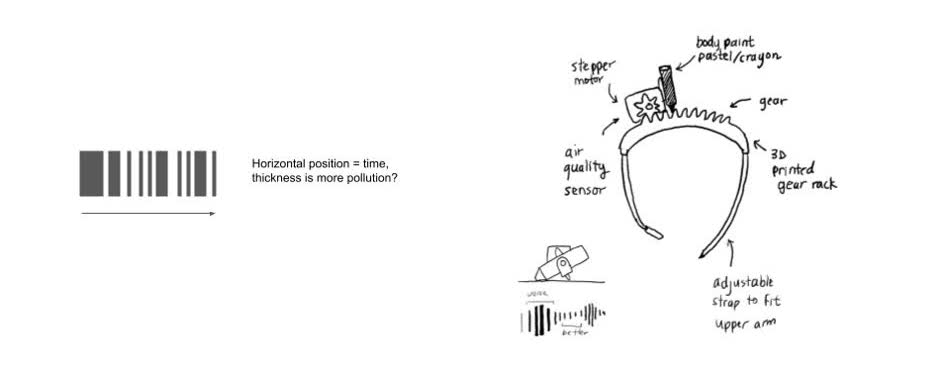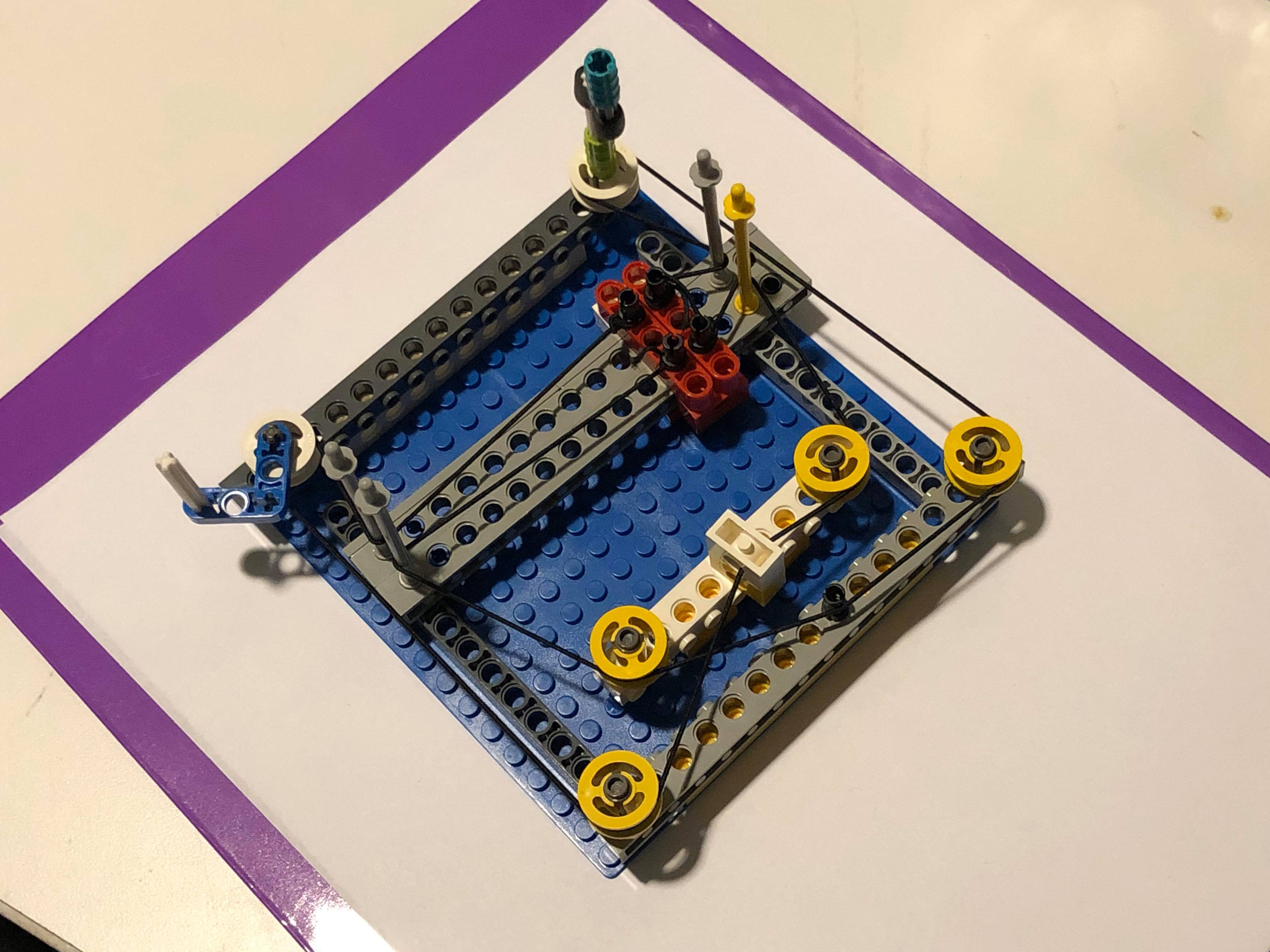Final Project Ideas
Pollution Armband
While we’re told that our actions are making a mark on the planet, many of us are shielded from the impact we humans have on the Earth. For a final project, I am considering an arm-worn wearable printer that marks our skin based on environmental data, such as air quality.
Design and Data Viz
In terms of designing this, I thought of different ways to get degrees of freedom for the printer in a small form factor. I want the mechanisms to be as small as possible, which is definitely a challege. In a sense, this would be like a small plotter, but i don’t have so much space if it’s worn on the body. Here are some sketches… I just sketched by hand for now because I’m not sure exactly how the components should be combined.


Component List
- Structure, 3D-Printing
- Stretch Bands and Velcro, to strap printer on the arm
- Microcontroller
- Air Quality Sensor, such as the Adafruit PMSA003I Air Quality Breakout - STEMMA QT / Qwiic
- Wifi/Bluetooth component, if the sensor is not located on-body but used somewhere else
- Various motors to produce rotational and lateral movements
- Body Crayon/Paint/Ink
Drawing Material
I also have to consider what kind of “ink” I’ll be using. What I use will definitely impact what mechanism I should build. It’d be cool to use a natural ink if this is an Earth-themed project. I’ve noticed there are paints that should be applied with some water, crayons, and also henna paste (which I think is the more natural route, but it does have more permanent effects). I suppose another consideration is how long the marks should last.
| Material | Considerations | Time it Lasts |
|---|---|---|
| Paints | Needs water reservoir? | Can be washed off. |
| Crayons | Needs mechanism to adjust for when it gets shorter with use. | Can be washed off |
| Henna | Can be placed as paste, might be easier to apply with fewer rigid components | Stains for longer period of time, approx. two weeks. |
LEGO-Based Prototype (October 27 2021)
Neil recommended looking at COREXY, which is a method to build out a tool for cartesian motion. He suggested that my project could be a “wearable corexy.” It is challenging enough to build out this mechanism, so he would deprioritize the data side of it and focus on the building and motion control. To begin, I checked out the theory. With some LEGO, I decided to see if I could prototype a version of the mechanism to see just how it could work. You can check it out below. It’s very intersting to see how the movement of the head can be controlled by the coordinated motion of two motors, either rotating in the same direction, in the opposite directions, or on their own.
